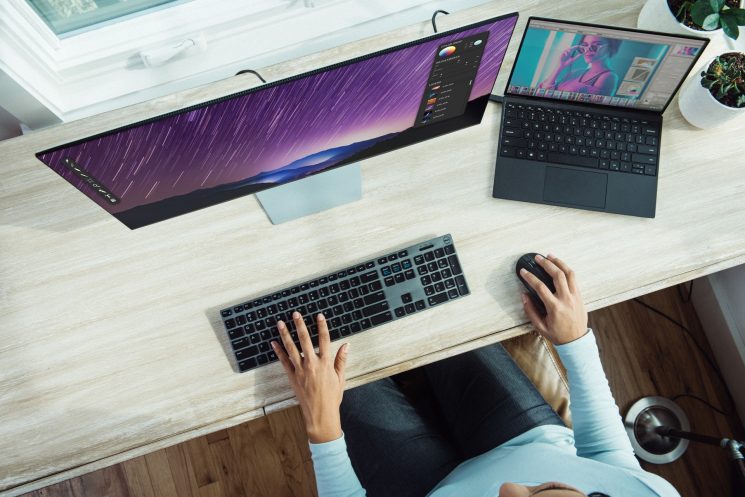Isn’t it fascinating how keeping a business operational doesn’t mean we need to all be in the same room or building? Turns out us humans are adaptational beasts. So go on and lock us out of the office during the Covid-19 pandemic – we’ll find ways to adapt and come back even stronger!
It’s a reality that some companies are mandating a return-to-office policy. But as expected, opinion on whether this is fruitful, dangerous, unreasonable or unnecessary runs rife.
“Companies renting office space are just throwing money away if all of their employees are still doing the same thing at home that they were doing at work. Why return to the office if you’re just Zooming all day anyway?” – Computerworld contributor, Steven J. Vaughan-Nicols.
Some companies perceived to be rigid have surprisingly announced that they’re allowing their employees to choose to work from home. Accounting and consulting firm PwC is allowing all of its 40,000 US client services employees to work virtually and live anywhere they want in perpetuity, making it one of the biggest employers to embrace permanent remote work.
Other major accounting firms, such as Deloitte and KPMG, also give employees more choice to work remotely.
The thing is, we’ve moved beyond remote work being a temporary thing. The longer the pandemic, the harder it’s become to instruct employees to come back to the office.
Not to mention that it’s easy to bungle the transition after two years in which tens of millions of employees were forced to work from home.
What’s running through workers’ minds as they return to the office?
How are workers dealing with this situation? There’s a lot of research on this. Predominantly, the failure to communicate clearly is what is emerging as harmful to morale, culture and retention.
“People report mixed feelings and a bit of trepidation as they gear up for a workplace that will be familiar yet changed. Between concerns about health and the strangeness of having been separated for over a year, it’s easy to see why workers might be anxious about returning…”
Here are some guidelines to contemplate as you head back into the workspace:
Tips for employees
- Accept that your mindset will need to change. Start thinking about certain activities that are better suited to in-person work.
- Similarly, try to flip back to intention management instead of time management. Working from home, we’ve become familiar with setting aside time to complete tasks, whereas, in the office, we knew we were there for 8 hours, so mentally, setting aside those 8 hours to work wasn’t an issue. Instead of thinking about time management, ask yourself, “What are my intentions for the day or week?”
- Once back in the workplace, you’ll quickly remember that interruptions are not isolated to remote working. Offices come with their own set of interruptions and it’ll take a moment to recall how to mitigate them. Try to protect some time from interruptions and relearn how to regain your focus after them.
- Seize the back-to-office move as an opportunity to think about how you want to do things differently this time. There’s been a big break in the monotony, allowing us to reset. Take a moment to reflect on what worked better when working from home, and figure out how to carry that through to your ‘new’ setting.
- We’ve made enormous strides in further developing empathy during this testing time. Acknowledge that our growth in this ability will fundamentally change how we think and act when returning to the office. Carry that forward, remembering that everyone is experiencing the same struggle simultaneously. Your co-workers might appear to be adjusting well, but what’s happening on the inside might differ.
Tips for employers
- Be open to change. Bear in mind that your management style might need to adjust as people return to the workplace because the people themselves have changed. How you focus on the work, tasks, and people now might look different than before.
- Be intentional about modality decisions. How do meetings and communication need to change? Think about what has worked well during the from-home period and carry that through. Perhaps functions that you carried out interdependently pre-pandemic can now be performed independently. Furthermore, business communications need to embrace current marketing trends. Since it seems that people are practically glued to their phones all day long, you can send SMS texts in bulk to reach your entire customer base quickly and easily.
- Create flexible spaces and flexible timing for employees.
- Consider that “going back to the office” might not be permanent. If we’ve learned anything since 2019, it’s to anticipate change, be nimble and adapt. Now is not the time for drastic decisions. We’re still figuring things out and need to make some tweaks along the way.
- Try to provide both flexibility and predictability for employees. Individuals have adapted to making their own decisions on operating as a team, so be prepared to embrace independent decision-making. Now more than ever, it’s crucial to create group principles that incorporate your employees’ expectations and basic preferences.
Tips for both
- Chances are, over the last couple of years, you’ve changed the way you access audio entertainment. Perhaps you’ve formed a deep relationship with podcasts. The statistics on podcast subscriptions certainly reflect that. Re-adapting to commuting to work is difficult. Try to use that time to carry over what you’ve learned to love while at home. Listen to your favourite podcasts or spend that time chatting with friends and family.
- Expect a re-adjustment to time spent commuting, getting dressed, planning meals and preparing your family for their needs while you’re at the office. You might need someone to help with life’s tasks which you no longer have time to do yourself. Perhaps you’ve reassessed your responsibilities and would prefer to assign certain time-consuming elements of your business operation to someone else. That “someone” could be a virtual assistant who can handle any personal or business assignments. Whether it’s managing your calendar, running your books or attending to queries, you can hire virtual personal assistants for that.
The big take-aways
Sit back, observe and admire before re-inventing, revolutionising and reshuffling.
Enjoy taking in the changes in behaviour.
Welcome the chance to better understand.
Then re-create your office environment with the knowledge and intention you’ve gained and earned.





